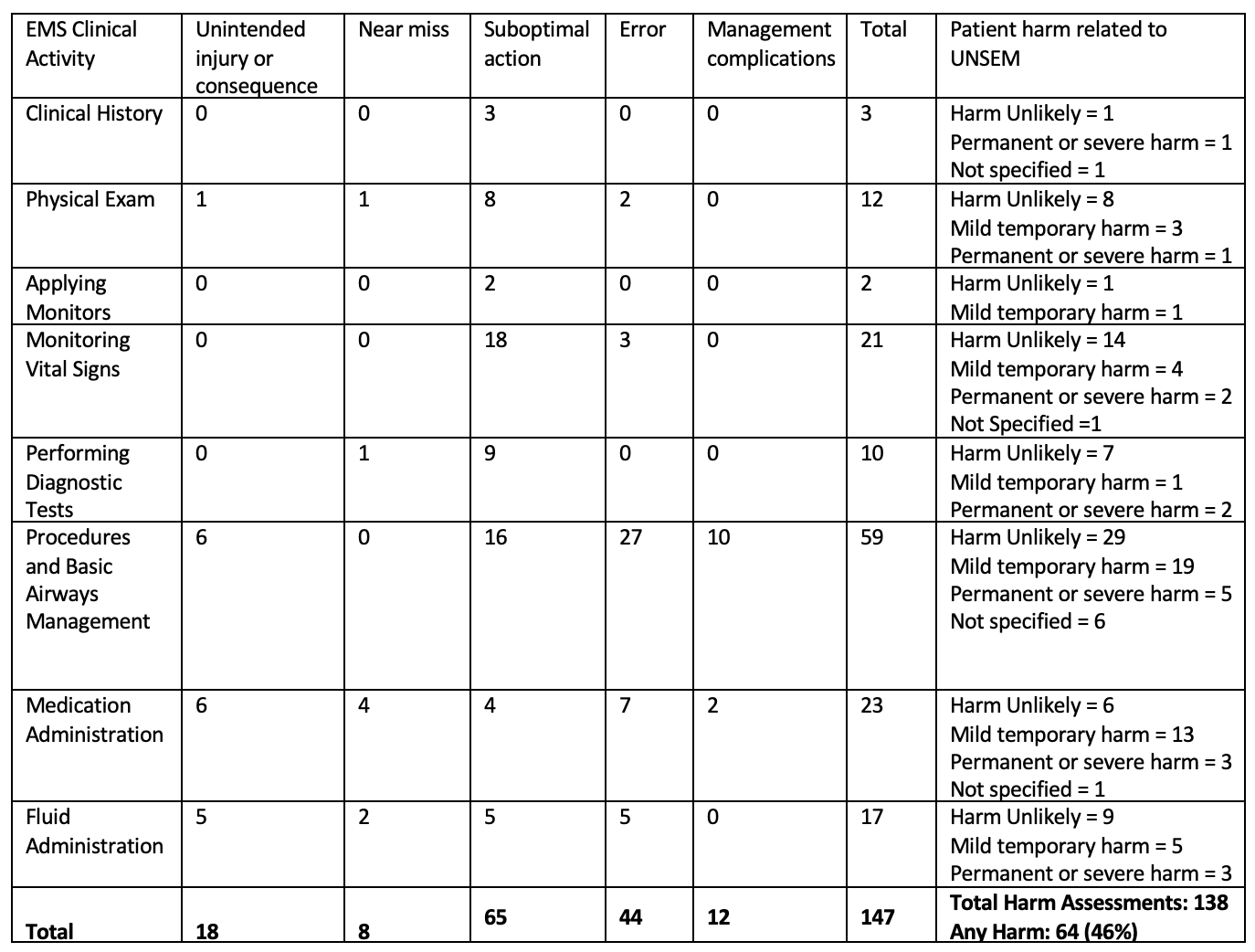Back
Emergency Medicine: All Areas
Category: Abstract Submission
Emergency Medicine XI
402 - Frequency, Type, and Degree of Potential Harm of Adverse Safety Events Among Pediatric Emergency Medical Services Encounters
Sunday, April 24, 2022
3:30 PM – 6:00 PM US MT
Poster Number: 402
Publication Number: 402.315
Publication Number: 402.315
Mark X. Cicero, Yale School of Medicine, New Haven, CT, United States; Janette Baird, The Warren Alpert Medical School of Brown University, Providence, RI, United States; Linda L. Brown, The Warren Alpert Medical School of Brown University, Providence, RI, United States; Marc Auerbach, Yale School of Medicine, Milford, CT, United States; Kathleen Adelgais, University of Colorado School of Medicine, Aurora, CO, United States

Kathleen Adelgais, MD MPH (she/her/hers)
Professor, Pediatrics (Emergency Medicine)
University of Colorado School of Medicine
Aurora, Colorado, United States
Presenting Author(s)
Background:
Only 5-10% of emergency medical services (EMS) patients are children, and most pediatric EMS patients have low acuity illness or injury. EMS encounter chart review has been used in emergent transports or for specific clinical conditions to identify adverse safety events in children. The frequency, type, and potential harm of adverse safety events for all children regardless of presenting acuity or clinical condition is not known.
Objective:
To evaluate the frequency, type, and potential harm of adverse safety events in a diverse population of pediatric EMS encounters.
Design/Methods:
This was a cross-sectional study of EMS patient care and hospital records of children aged 0-18 years treated by one of 15 EMS agencies among three states (Colorado, Connecticut and Rhode Island) between November 2019 and October 2021. Trained research associates utilized a validated EMS adverse safety event identification chart extraction tool. Adverse safety events were recorded in six categories (assessment, diagnosis, clinical decision-making, procedures, medication, and fluid administration) and defined across five types: Unintended injuries or consequences, Near misses, Suboptimal actions, Errors, and Management complications (UNSEMs). Type and frequency of UNSEMS in each category were further rated across three severities of potential harm: Harm Unlikely, Mild Temporary Harm, or Permanent/Severe Harm. EMS Physicians verified UNSEMs and degree of harm. Frequency of UNSEMs and likelihood of harm are reported as a percent of patient encounters (with 95% CIs).
Results:
A total of 491 patient encounters were reviewed of which 65 (13.2%) were transported emergently. Overall, there were 147 UNSEMs identified (30% of patient encounters; 95% CI: 25.9, 34.1), across all clinical categories (Table 1) with suboptimal action being the most frequent UNSEM (n=65, 44.2%; 95% CI: 36.2, 50.2) and procedures and basic airway management being the most common clinical activity with an UNSEM (n=59, 40.1%; 95% CI: 32.2, 47.8). Overall, the majority of UNSEMS were evaluated as Harm Unlikely (51%; 95%CI: 42.9, 59.1). Procedures and airway management were also the clinical category with the highest total number of adverse safety events with either mild or severe potential harm identified (49%; 95% CI: 40.9, 57.9)
Conclusion(s):
Almost one-third of pediatric EMS encounters had an identified adverse safety event with encounters involving procedures or airway management having the greatest potential for both adverse safety events and harm. EMS quality and education efforts can be informed by these findings to improve pediatric care.
Table 1: Frequency, Type, and Degree of Potential Harm among UNSEMs across EMS Clinical Care Domains.
Only 5-10% of emergency medical services (EMS) patients are children, and most pediatric EMS patients have low acuity illness or injury. EMS encounter chart review has been used in emergent transports or for specific clinical conditions to identify adverse safety events in children. The frequency, type, and potential harm of adverse safety events for all children regardless of presenting acuity or clinical condition is not known.
Objective:
To evaluate the frequency, type, and potential harm of adverse safety events in a diverse population of pediatric EMS encounters.
Design/Methods:
This was a cross-sectional study of EMS patient care and hospital records of children aged 0-18 years treated by one of 15 EMS agencies among three states (Colorado, Connecticut and Rhode Island) between November 2019 and October 2021. Trained research associates utilized a validated EMS adverse safety event identification chart extraction tool. Adverse safety events were recorded in six categories (assessment, diagnosis, clinical decision-making, procedures, medication, and fluid administration) and defined across five types: Unintended injuries or consequences, Near misses, Suboptimal actions, Errors, and Management complications (UNSEMs). Type and frequency of UNSEMS in each category were further rated across three severities of potential harm: Harm Unlikely, Mild Temporary Harm, or Permanent/Severe Harm. EMS Physicians verified UNSEMs and degree of harm. Frequency of UNSEMs and likelihood of harm are reported as a percent of patient encounters (with 95% CIs).
Results:
A total of 491 patient encounters were reviewed of which 65 (13.2%) were transported emergently. Overall, there were 147 UNSEMs identified (30% of patient encounters; 95% CI: 25.9, 34.1), across all clinical categories (Table 1) with suboptimal action being the most frequent UNSEM (n=65, 44.2%; 95% CI: 36.2, 50.2) and procedures and basic airway management being the most common clinical activity with an UNSEM (n=59, 40.1%; 95% CI: 32.2, 47.8). Overall, the majority of UNSEMS were evaluated as Harm Unlikely (51%; 95%CI: 42.9, 59.1). Procedures and airway management were also the clinical category with the highest total number of adverse safety events with either mild or severe potential harm identified (49%; 95% CI: 40.9, 57.9)
Conclusion(s):
Almost one-third of pediatric EMS encounters had an identified adverse safety event with encounters involving procedures or airway management having the greatest potential for both adverse safety events and harm. EMS quality and education efforts can be informed by these findings to improve pediatric care.
Table 1: Frequency, Type, and Degree of Potential Harm among UNSEMs across EMS Clinical Care Domains.

